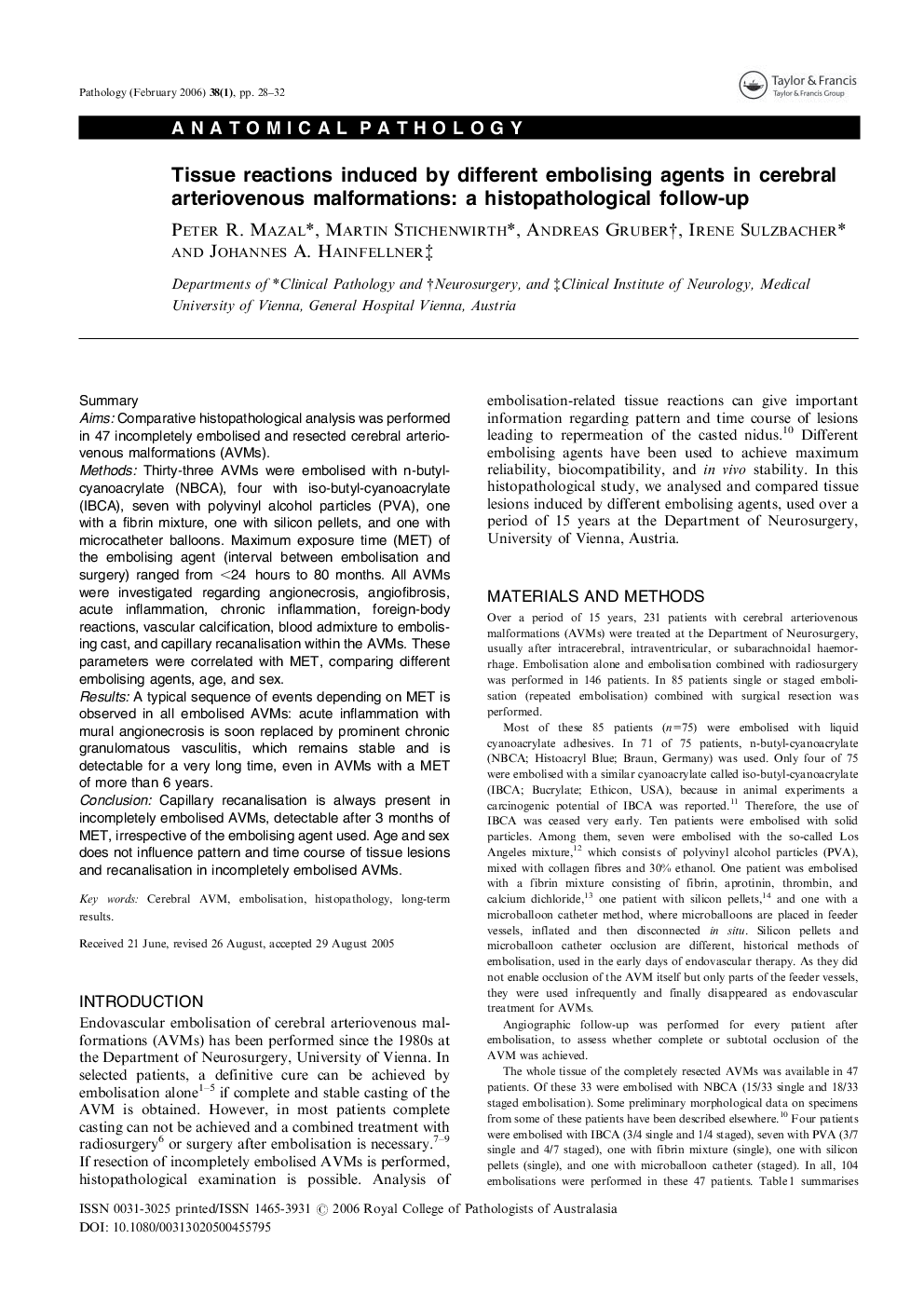| کد مقاله | کد نشریه | سال انتشار | مقاله انگلیسی | نسخه تمام متن |
|---|---|---|---|---|
| 106447 | 161545 | 2006 | 5 صفحه PDF | دانلود رایگان |

SummaryAimsComparative histopathological analysis was performed in 47 incompletely embolised and resected cerebral arteriovenous malformations (AVMs).MethodsThirty-three AVMs were embolised with n-butyl- cyanoacrylate (NBCA), four with iso-butyl-cyanoacrylate (IBCA), seven with polyvinyl alcohol particles (PVA), one with a fibrin mixture, one with silicon pellets, and one with microcatheter balloons. Maximum exposure time (MET) of the embolising agent (interval between embolisation and surgery) ranged from <24 hours to 80 months. All AVMs were investigated regarding angionecrosis, angiofibrosis, acute inflammation, chronic inflammation, foreign-body reactions, vascular calcification, blood admixture to embolis- ing cast, and capillary recanalisation within the AVMs. These parameters were correlated with MET, comparing different embolising agents, age, and sex.ResultsA typical sequence of events depending on MET is observed in all embolised AVMs: acute inflammation with mural angionecrosis is soon replaced by prominent chronic granulomatous vasculitis, which remains stable and is detectable for a very long time, even in AVMs with a MET of more than 6 years.ConclusionCapillary recanalisation is always present in incompletely embolised AVMs, detectable after 3 months of MET, irrespective of the embolising agent used. Age and sex does not influence pattern and time course of tissue lesions and recanalisation in incompletely embolised AVMs.
Journal: Pathology - Volume 38, Issue 1, February 2006, Pages 28-32